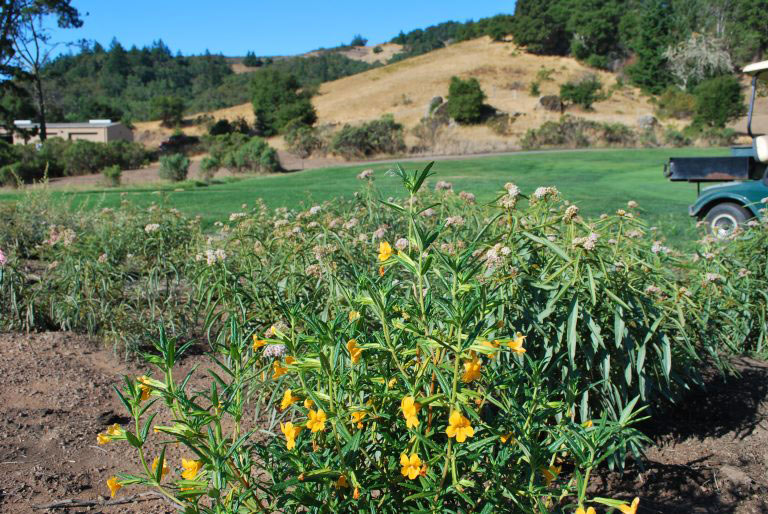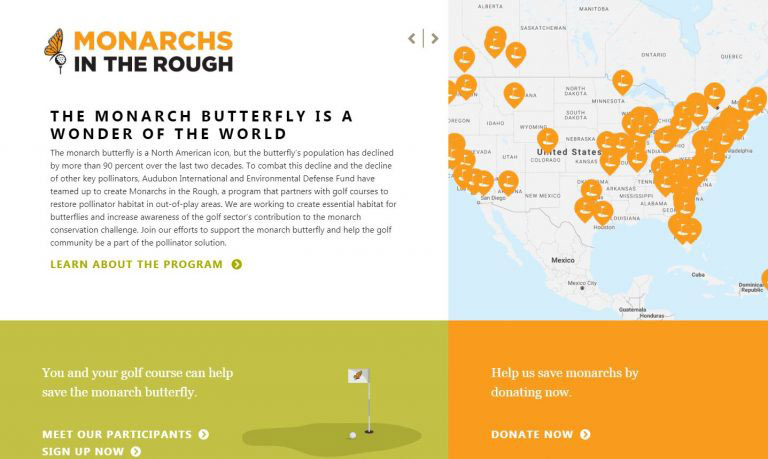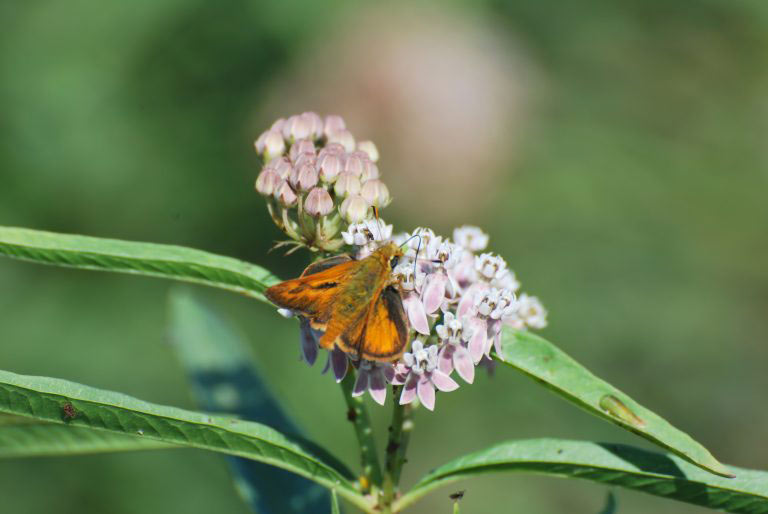
Staff at Meadow Club in Fairfax, Calif., planted showy and narrowleaf milkweed — two milkweed species native to Mount Tamalpais’ vernal pool ecosystem. Photos courtesy of Environmental Defense Fund
Meadow Club in Northern California is among the first golf courses to participate in a program engaging the golf community in conservation efforts for the beloved monarch butterfly.
Monarchs in the Rough launched in January 2018 and has since enrolled more than 250 courses committed to planting milkweed and wildflower habitat, which the monarch needs to breed and feed.
The population of monarch butterflies has declined by more than 90 percent in the past two decades, and other pollinator populations have declined at similarly alarming rates. To change this trajectory, staff from Environmental Defense Fund and Audubon International decided to team up with a seemingly unlikely ally: golf courses.
Occupying approximately 2.5 million acres in the United States alone, golf courses hold untapped potential for habitat restoration if managed appropriately. That’s where Monarchs in the Rough comes in, offering scientific expertise and technical support to help golf course superintendents and personnel grow habitat in out-of-play areas.

Monarchs in the Rough provides an interactive map of participating courses and case studies highlighting restoration efforts.
But at many golf courses, including Meadow Club, the staff is already well equipped with knowledge and experience from previous conservation efforts, and they can offer advice for other golf courses and individuals looking for milkweed planting tips.
A different kind of golf pro
Meadow Club’s director of golf course maintenance, David Sexton, CGCS, and landscape manager, Carissa Brands, have been working for years to support monarch butterflies and other pollinators, and to increase the overall sustainability of their 90-acre course, which is located in Fairfax, Calif.
In particular, David and Carissa have been focused on a 25-acre border area, where they have successfully established native vegetation by adding in roughs and turning off sprinklers. This natural, out-of-play area now contains nearly 8,000 square feet of milkweed stems that were planted alongside other native flowering plants.
Here are three lessons David and Carissa have learned from experimenting with various milkweed planting methods:
- Start small and try different techniques to find out what works best for your specific environment before you try expanding the habitat. Careful site selection and site preparation are key for success.
- Plant milkweed habitat in areas with easy access to irrigation. At Meadow Club, getting enough water to the plants has been critical for establishment, especially during the dry summers in Marin County, Calif.
- Weed pressure at Meadow Club is high, especially when project sites are irrigated. To combat high weed pressure, plant milkweed seedlings rather than seeding directly. Meadow Club is able to grow milkweed and other pollinator-friendly plant seedlings in a native plant nursery on-site. Always try to plant native seedlings.
So far, David and Carissa have spotted at least one monarch butterfly and a variety of native bees and other butterflies, including a large group of California tortoiseshell butterflies that moved through the course and delighted golfers. As milkweed habitat sites mature, they hope to see more monarchs.
Enjoying the scenery
Responses from Meadow Club members have been overwhelmingly positive thanks to course personnel’s efforts to inform members about the multiple important ecological benefits of planting native pollinator habitat.

A butterfly resting on milkweed at Meadow Club.
The course highlights its environmental stewardship work in a monthly newsletter, and it hosts a guided spring walk to showcase restoration efforts throughout the course. Equally important are everyday interactions with golfers, in which staff educate members about certain plants or projects underway. This keeps members informed and creates a course culture that encourages appreciation of native habitat and wildlife. Ultimately, golfers leave happier for having spent time in a healthy, biodiverse environment.
David, who is a 40-year member of GCSAA, and Carissa are currently planning an environmental day of work and fun in which members will have an opportunity to plant seedlings and learn more about sustainability on the course. With a bit of luck, participants will be able to spot monarchs as they work.